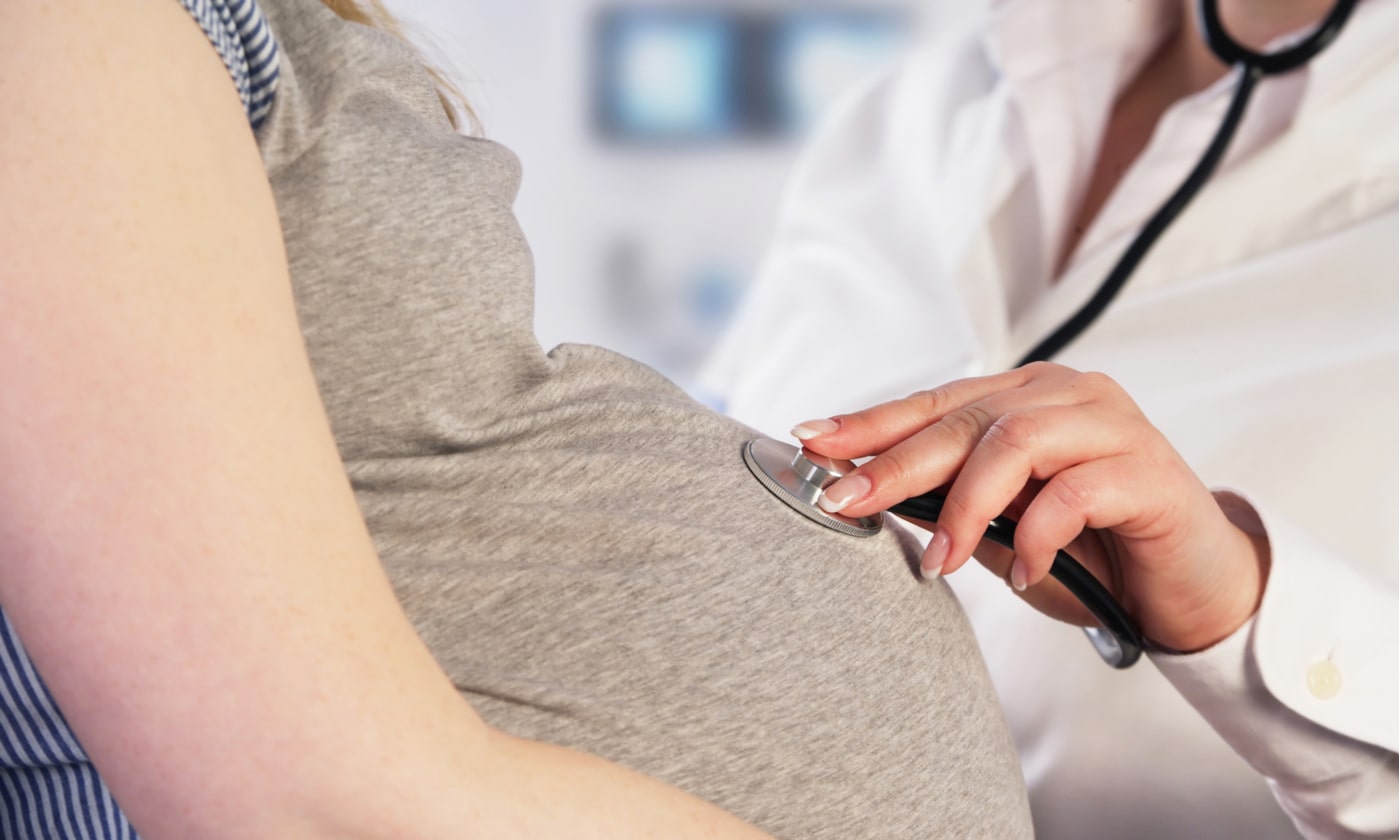Sexually transmitted diseases (STDs) can complicate pregnancy and may cause serious health complications for both a woman and her unborn child. Some STDs are curable, while others are not, but treatment and prevention options are still available. In this article, we will discuss the risks associated with various STDs and ways that these risks can be reduced.
Chlamydia and Gonorrhea:
Chlamydia and gonorrhea are both caused by bacterial infections. Most infected people do not show any symptoms, but there is still a health risk during pregnancy. Both of these STDs can cause ectopic pregnancy (1), which is when a fertilized egg implants itself outside of the womb, usually in one of the fallopian tubes. This egg will not develop into a baby and a woman’s health may be at risk if the pregnancy continues.
Untreated chlamydia and gonorrhea can also develop into pelvic inflammatory disease (PID). This is an infection of a female’s reproductive organs and can cause long-term pelvic/abdominal pain, infertility, and an increased risk of ectopic pregnancy (2). See our previous article for more information about the long-term complications of chlamydia.
Gonorrhea during pregnancy is also associated with premature birth and stillbirth (1).
Chlamydia and gonorrhea can transfer from the mother to the baby during delivery, which can lead to eye infections (both), as well as pneumonia (for chlamydia) (1).
Antibiotics are an effective treatment for chlamydia and gonorrhea for both mother and baby (1).
Trichomoniasis
Trichomoniasis is caused by an infection with a protozoan parasite. The majority of infected people do not show any symptoms; however, an untreated infection can cause fallopian tube damage, as well as increase the risk of premature birth and low birth weight (1).
Antibiotics are an effective treatment for trichomoniasis for both mother and baby (1).
Syphilis
Syphilis is caused by a bacterial infection. It has four distinct stages, each with different symptoms. See our previous article here for more information about the four stages of syphilis.
Syphilis during pregnancy can result in miscarriage, stillbirth, or infant death shortly after delivery in up to 40% of cases (3). There is also about a 70% chance of an untreated woman passing syphilis to her fetus resulting in congenital syphilis (4). Congenital syphilis can result in serious health complications, including enlargement of the liver and spleen, rashes, fever, neurosyphilis, lung inflammation (5), developmental delays, seizures, and other fatal complications (6).
Penicillin is the most effective treatment for both mother and baby. Routine screening during pregnancy and prompt treatment is the preferred option to prevent transmission to the fetus. If a child is born with syphilis, treatment must begin immediately to prevent serious complications (6).
Human Papillomavirus (HPV)
HPV is a very common STD. Many people do not show any symptoms and effectively clear infection within 6–12 months (7). However, some HPV genotypes can lead to genital warts, while other genotypes can cause cell changes that lead to cervical cancer (8).
Genital warts that form in the birth canal can cause complications during delivery. In very rare cases, the virus may also be transmitted to the baby during delivery, and potentially cause warts in the newborn’s throat which will require surgery (1).
Wart treatment in the mother is possible during pregnancy (1). There is also a vaccine available for HPV, which is recommended at age 11 or 12 years, and for everyone through to 26 years, if not vaccinated already. Vaccination for individuals older than 26 years provides less benefit, as most sexually active adults have already been exposed to HPV (9).
Hepatitis B
Hepatitis B is caused by a viral infection that can spread from mother to child at birth (perinatal transmission), as well as through blood (e.g., sharing needles), and sexual contact. Many people with an acute (short-term) infection remain asymptomatic, while others can experience a range of symptoms, including yellowing of the skin or eyes, nausea, and fatigue. Chronic (long-term) infection is common in infants and young children, but rare in adults. Chronic infection can lead to liver cirrhosis and liver cancer (10).
About 90% of pregnant women with an acute hepatitis B infection and 10–20% of pregnant women with chronic infection will pass the virus to their babies. If the perinatal transmission is a risk, the baby must receive their first hepatitis B vaccine dose, along with a dose of HBIG (hepatitis B immune globulin), shortly after birth. HBIG provides immediate, short-term protection against hepatitis B (11).
There are treatments available for chronic infection to suppress the replication of the virus and slow disease progression. However, these medications do not cure hepatitis B, so must continue for life (10). The best defense against hepatitis B is to obtain the very safe and effective vaccine.
Hepatitis C
Hepatitis C is caused by a viral infection that is commonly spread through sharing needles but can also spread through sexual contact (rare) and from mother to child at birth (only ~6% of infants of infected mothers) (12). Hepatitis C often doesn’t cause any symptoms in both acutely infected and chronically infected people. However, chronic hepatitis C, which develops in more than 50% of cases (13), is associated with an increased risk of liver disease, including cirrhosis and liver cancer (14).
Hepatitis C is treated with antiviral medications to eliminate the virus from the body. However, these medications are not recommended during pregnancy due to the risks for the developing fetus. In addition, hepatitis C medications should be stopped at least 6 months before pregnancy, as the risk of birth defects persists for up to 6 months after taking the medication (15).
HIV
HIV is caused by a viral infection that can spread through contact with infected blood, semen, pre-ejaculate, and vaginal fluids, as well as from mother to child during pregnancy, at childbirth, or while breastfeeding. HIV targets cells in the immune system, and untreated HIV eventually leads to AIDS (16).
Effective antiretroviral therapy (ART) prevents the virus from multiplying, thereby reducing the amount of virus in the body (known as the viral load). When the viral load is very low (<200 copies per milliliter of blood), it is referred to as viral suppression. When viral suppression is achieved, there is a very low risk of transmission from mother to child (17). See our previous article here for more information about viral load and suppression.
References:
1. Sexually Transmitted Diseases (STDs) during Pregnancy. American Pregnancy Association.
2. Pelvic Inflammatory Disease (PID) – CDC Fact Sheet. (Reviewed Nov 2020). CDC.
3. Syphilis – CDC Fact Sheet (Detailed). (2017, January).
4. Sheffield JS, et al. (2002). Congenital syphilis after maternal treatment for syphilis during pregnancy. Am J Obstet Gynecol, 186(3), 569-573.
5. Woods CR. (2009). Congenital syphilis-persisting pestilence. Pediatr Infect Dis J, 28 (6), 536-537.
6. Sexually Transmitted Diseases Treatment Guidelines, 2015. (2015). MMWR, 64(RR-3).
7. Cuschieri KS, Whitley MJ, & Cubie HA. (2004). Human papillomavirus type-specific DNA and RNA persistence–implications for cervical disease progression and monitoring. J Med Virol, 73 (1), 65-70.
8. Cervical Cancer. WHO.
9. Genital HPV Infection – Fact Sheet. (2021, January). CDC.
10. Hepatitis B, World Health Organization. July 2020.
11. Hepatitis B and Hepatitis C in Pregnancy. (Updated June 2021). ACOG
12. Viral Hepatitis – Q&As from the Public. (2020, July). CDC.
13. Liang TJ, Rehermann B, Seef LB, & Hoofnagle JH. (2000) Pathogenesis, natural history, treatment, and prevention of hepatitis C. Ann Intern Med,132(4), 296-305.
14. Thomas DL & Seef LB. (2005) Natural history of hepatitis C. Clin Liver Dis,9(3), 383-398.
15. HCV in Pregnancy. (Updated August 2020). AASLD
16. HIV/AIDS. World Health Organization.
17. HIV Treatment. Reviewed May 2021. CDC.



